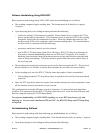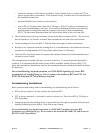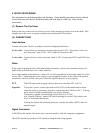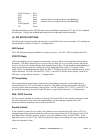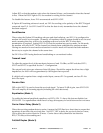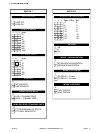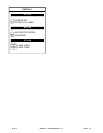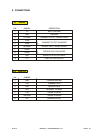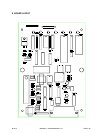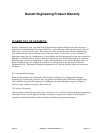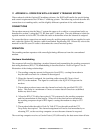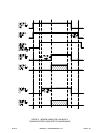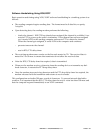11 AP PEN DIX A - OP ER A TION WITH A GE MARC V TRUNKING SYS TEM
When ordered with the Option 002 trunking software, the B1474 will handle the special timing
and control requirements of a GE Marc V trunking system. The following sections describe the
connections to a trunking radio, and the slightly different operation of the radio modem.
CON NEC TIONS
The modem connects into the Marc V system the same as it would to a conventional radio, as
described in section 5, using the PTT, RX data and TX data pins. The only difference is that the
squelch monitor is tied to RFCTS within the radio to determine when the channel is assigned.
To ensure that these connections are made correctly and the proper signals are supplied to each
unit, order the Option 001 interface cable from Barnett Engineering Ltd. Otherwise, refer to the
manual for the Ericsson GE radio to determine the correct interface points.
OP ER A TION
The trunking modem operates with some slight timing differences from the conventional
modem.
Hard ware Hand shak ing
The sequence followed in obtaining a trunked channel and transmitting the sending computer’s
data using hardware (RTS/CTS) handshaking is described below. Refer to Figure 2 for an
illustration of the timing relationships.
1. The sending computer asserts its Request to Send (RTS), causing the modem to
key the radio and wait for a channel to be assigned.
2. When the channel is assigned, the trunking radio returns RF Clear to Send
(RFCTS) to the modem. The signal is connected to the SQUELCH input on the
modem.
3. The modem produces tones onto the channel and waits the specified RTS/CTS
delay. This delay is a minimum of 5 msec to ensure that all tones have stabilized
before any data is sent.
4. When the RTS/CTS delay has expired, CTS is returned to the sending computer
and the transmission of data begins. When all of the data has been transferred,
the sending computer drops its RTS signal, causing the modem to drop its CTS
signal.
5. The modem holds the radio’s Push To Talk (PTT) on the radio until the PTT
Drop Delay has expired. The channel assignment will not be lost immediately on
releasing PTT, so the receiving computer can use the same channel to respond.
The receiving computer receives a Carrier Detect (CD) followed by the data some interval later
.
B1474
BARNETT EN GI NEERING LTD.
PAGE
22



